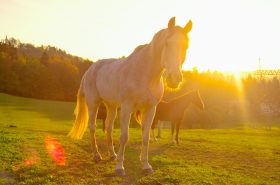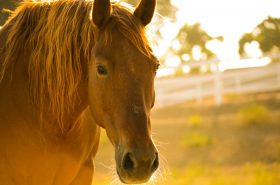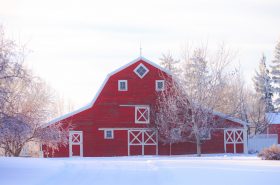Last week, my mare suddenly came up lame, her entire lower leg swollen and painful to the touch. I immediately put her in a stall with soft bedding, iced her leg, and then wrapped it. I’ve dealt with injuries like this before, so I decided I would wait and watch to see if a visit with the veterinarian was needed. I kept her on stall rest and continued to ice her leg twice a day and keep it wrapped and within a few days, the swelling and lameness subsided completely. I’m still not quite sure what happened, but she appears to be fine now so she is back out on pasture.
Having over 40 years of horse experience helps when dealing with injuries, but for newer owners, I thought it might be helpful to discuss some times when stall rest may be called for.
There are a number of different reasons why a horse may need stall rest ranging from illness to injuries to surgery recovery.
For many types of acute lameness, your horse will likely need stall rest to prevent them from further stressing the injury and to allow healing to take place. This has been the case for several of my horses. One had to remain on stall rest for nearly six months for a torn suspensory ligament and another, for a month or so after a tendon injury. For another horse that had colic surgery, stall rest was needed for several months while the incision healed.
No matter the reason, here are a few tips to keep in mind when putting a horse on stall rest:
- Place your horse where they can see other horses to help to keep stress levels down. If this isn’t possible, having a goat or some other type of companion animal in the stall or close by can be helpful.
- Provide stall toys or treats they must work to get to avoid boredom.
- Provide access to grass hay for most of the day to help prevent ulcers or stable vices. Using a slow feeder is helpful for making hay last.
- Hand-walk or hand-graze your horse daily, if possible.
- Provide access to loose salt and/or a salt block and plenty of fresh water.
- Install a fan in hot barns during the summer.
- Keep the stall clean and use bedding to keep your horse comfortable.
Keeping horses stalled on a regular basis isn’t ideal, but sometimes stall rest is needed to allow your horse to fully recuperate after an injury. Feel free to share your stall rest stories in the comments!



